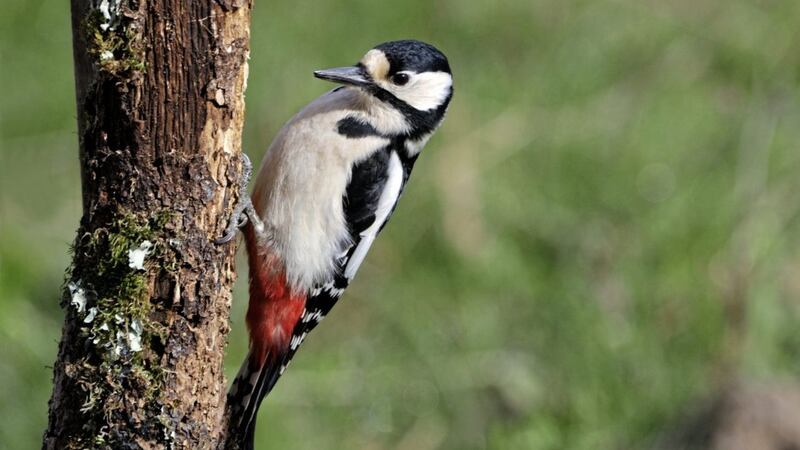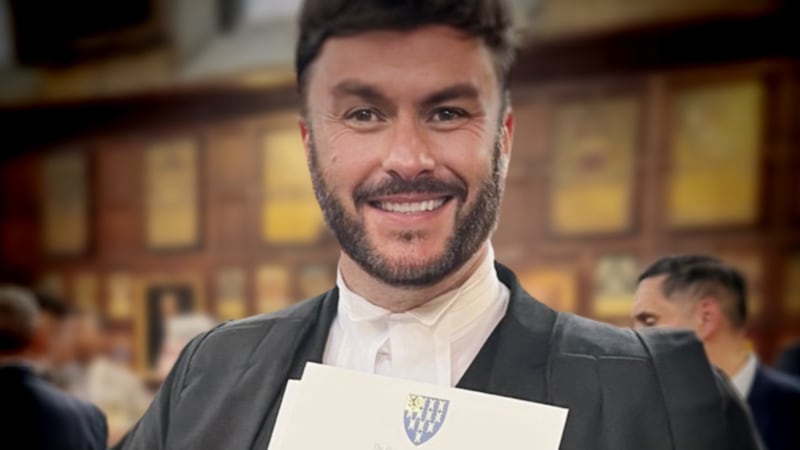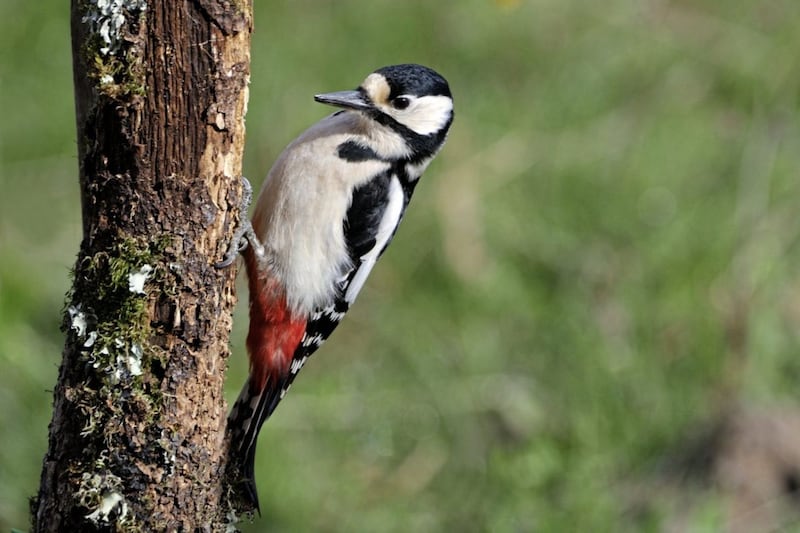I'VE never met the Catholic Bishop of Clogher, but his recent visit to a school in Enniskillen helped bring about my first ever encounter with a long-lost Irish bird, the Great Spotted Woodpecker, in Castle Archdale Country Park. There, early into a walk with Robbie at my side, the bird's distinctive rapid-fire drumming rattled out, a sound I'd long been waiting to hear in these woods.
Evidence suggests Dedrocopos major was once a native breeding species in Ireland. In the early 1900s, femurs of two birds were discovered from the excavation of a cave complex near Ennis in Co Clare which were subsequently carbon dated to the Bronze Age. When exactly woodpeckers became extinct on the island is unclear, but experts believe this happened with the countrywide deforestation during the 17th and 18th centuries.
Many reported sightings in more recent decades are thought to have been rare winter visitors, often solitary birds arriving from Scandinavia and northern Europe during what are known as 'irruption' years, periods when migrating birds turn up where they are not typically found.
However, in 2006 rumours began to circulate that, after a long absence here, a pair of Great Spotted Woodpeckers had bred in Co Down. Breeding in Co Wicklow was confirmed three years later and since then the bird has re-established itself in counties Wicklow, Dublin, Antrim, Down and Fermanagh.
DNA analysis of these arrivals indicate they are of British origin, where numbers have recovered well in recent years. The bird's welcome re-colonisation of Ireland is probably due to those population increases across the Irish Sea as well as favourable easterly winds and our inviting woodland habitats. The birds continue their spread west to the woods of Clare and Kerry.
Of starling size, Great Spotted Woodpeckers have a black crown, white cheeks with black lines underneath. Their pale coloured breast merges with a bright crimson under-tail while their black wings are barred with white. Males have an additional red patch on the back of the neck.
Its powerful beak is perfect for opening holes in tree bark to find insects and larvae which it extracts with a long flexible tongue, while during the breeding season it will also take the eggs and chicks of smaller birds.
The bird uses its chisel like beak to excavate a nesting cavity within a trunk and to announce ownership of territory by hammering against trees, warning off rivals with its far-reaching drumming sound. For the majority of birds, this action, most intense between late January and April, would cause brain damage – but woodpeckers have a special shock-absorbing skull which protects them from the impact. It wasn't until 1943 that proof from a birdwatcher showed this distinctive sound was not made vocally but by the bird's beak striking bark.
In ancient Italy, the bird was worshipped as a minor god associated with Picus, an early king and the Latin name for woodpecker. Considered important in foretelling the future there, the bird was also linked to the fertilisation of the soil, while North American native tribes considered the bird a messenger and prophet.
The Bishop's role in my meeting with this bird of great myth and lore came through a school staff member, who dispatched me at short notice to collect a gift voucher, a thank-you for his visit there later that morning. Relieved at having collected and delivered the gift on time, I decided to stop off at Castle Archdale for a walk in the woods, unaware I was about to hear that staccato sound puncture the crisp clear air, suggesting spring is near.




